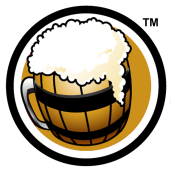Hops
|
Amount
|
Variety
|
Cost
|
Type
|
AA
|
Use
|
Time
|
IBU
|
Bill %
|
|
1.50 oz |
Hallertau Hersbrucker1.5 oz Hallertau Hersbrucker Hops |
|
Pellet |
4 |
Boil
|
60 min |
19.31 |
75% |
|
0.50 oz |
Hallertau Hersbrucker0.5 oz Hallertau Hersbrucker Hops |
|
Pellet |
4 |
Boil
|
30 min |
4.95 |
25% |
|
2 oz
/ $ 0.00
|
Mash Guidelines
|
Amount
|
Description
|
Type
|
Start Temp
|
Target Temp
|
Time
|
|
9.35 gal |
Strike Water (Dark Munich, Pilsner, Melanodin) |
Temperature |
-- |
137 °F |
-- |
|
|
Protein Rest |
Infusion |
-- |
131 °F |
25 min |
|
|
Alpha-Amylase Rest |
Temperature |
-- |
145 °F |
45 min |
|
|
Beta-Amylase Rest |
Sparge |
-- |
158 °F |
50 min |
|
|
Mash-Out |
Temperature |
-- |
170 °F |
20 min |
|
1.16 gal |
Batch Sparge |
Sparge |
-- |
170 °F |
15 min |
Starting Mash Thickness:
2.25 qt/lb
|
Other Ingredients
|
Amount
|
Name
|
Cost
|
Type
|
Use
|
Time
|
|
1 tsp |
Irish Moss
|
|
Fining |
Boil |
15 min. |
|
13.75 g |
Chalk
|
|
Water Agt |
Mash |
1 hr. |
|
2.75 g |
Epsom Salt
|
|
Water Agt |
Mash |
1 hr. |
|
15.46 ml |
Phosphoric acid
|
|
Water Agt |
Mash |
1 hr. |
|
1.87 ml |
Phosphoric acid
|
|
Water Agt |
Sparge |
1 hr. |
Target Water Profile
Munich (Dark Lager)
| Ca+2 |
Mg+2 |
Na+ |
Cl- |
SO4-2 |
HCO3- |
|
82 |
20 |
4 |
2 |
16 |
320 |
Rice Hulls:
Add 1lb for every 5lbs of malt to help with heat distribution.
Pilsner malt:
Protein rest (122-131F 15 min).
Chocolate malt:
Add after mash-out, during vorlauf. |
|
Mash Chemistry and Brewing Water Calculator
|
Notes
Overall Impression:
A strong, rich, and very malty German lager that can have both pale and dark variants. The darker versions have more richly-developed, deeper malt flavors, while the paler versions have slightly more hops and dryness.
Aroma:
Very strong maltiness. Darker versions will have significant Maillard products and often some toasty aromas. A light caramel aroma is acceptable. Lighter versions will have a strong malt presence with some Maillard products and toasty notes. Virtually no hop aroma, although a light noble hop aroma is acceptable in pale versions. A moderately low malt-derived dark fruit character may be present (but is optional) in dark versions. A very slight chocolate-like aroma may be present in darker versions, but no roasted or burned aromatics should ever be present. Moderate alcohol aroma may be present.
Appearance:
Deep gold to dark brown in color. Darker versions often have ruby highlights. Lagering should provide good clarity. Large, creamy, persistent head (color varies with base style: white for pale versions, off-white for dark varieties). Stronger versions might have impaired head retention, and can display noticeable legs.
Flavor:
Very rich and malty. Darker versions will have significant Maillard products and often some toasty flavors. Lighter versions will have a strong malt flavor with some Maillard products and toasty notes. A very slight chocolate flavor is optional in darker versions, but should never be perceived as roasty or burnt. Clean lager character. A moderately low malt-derived dark fruit character is optional in darker versions. Invariably there will be an impression of alcoholic strength, but this should be smooth and warming rather than harsh or burning. Little to no hop flavor (more is acceptable in pale versions). Hop bitterness varies from moderate to moderately low but always allows malt to dominate the flavor. Most versions are malty-sweet, but should have an impression of attenuation. The sweetness comes from low hopping, not from incomplete fermentation. Paler versions generally have a drier finish.
Mouthfeel:
Medium-full to full body. Moderate to moderately-low carbonation. Very smooth without harshness, astringency. A light alcohol warmth may be noted, but it should never burn.
Comments:
Most versions are dark colored and may display the caramelizing and Maillard products of decoction mashing, but excellent pale versions also exist. The pale versions will not have the same richness and darker malt flavors of the dark versions, and may be a bit drier, hoppier and bitterer. While most traditional examples are in the lower end of the ranges cited, the style can be considered to have no upper limit for gravity, alcohol and bitterness (thus providing a home for very strong lagers).
History:
A Bavarian specialty first brewed in Munich by the monks of St. Francis of Paula. Historical versions were less well-attenuated than modern interpretations, with consequently higher sweetness and lower alcohol levels (and hence was considered “liquid bread” by the monks). The term “doppel (double) bock” was coined by Munich consumers. Many commercial doppelbocks have names ending in “-ator,” either as a tribute to the prototypical Salvator or to take advantage of the beer’s popularity. Traditionally dark brown in color; paler examples are a more recent development.
Characteristic Ingredients:
Pils and/or Vienna malt for pale versions (with some Munich), Munich and Vienna malts for darker ones and occasionally a tiny bit of darker color malts (such as Carafa). Saazer-type hops. Clean lager yeast. Decoction mashing is traditional.
Style Comparison:
A stronger, richer, more full-bodied version of either a Dunkles Bock or a Helles Bock. Pale versions will show higher attenuation and less dark fruity character than the darker versions.
Entry Instructions:
The entrant will specify whether the entry is a pale or a dark variant.
Vital Statistics:
OG: 1.072 – 1.112
FG: 1.016 – 1.024
ABV: 7.0 – 10.0%
IBUs: 16 – 26
SRM: 6 – 25
Commercial Examples:
Dark Versions –Andechser Doppelbock Dunkel, Ayinger Celebrator, Paulaner Salvator, Spaten Optimator, Tröegs Troegenator, Weihenstephaner Korbinian,; Pale Versions – Eggenberg Urbock 23º, EKU 28, Plank Bavarian Heller Doppelbock
Tags:
high-strength, amber-color, pale-color, bottom-fermented, lagered, central-Europe, traditional-style, bock-family, malty

Last Updated and Sharing

- Public: Yup, Shared
- Last Updated: 2019-10-29 18:46 UTC
For quick copying and pasting to a text based forum or email.
Click the Download as HTML file button below.
Recipe costs can be adjusted by changing the batch size. They won't be saved but will give you an idea of costs if your final yield was different.
|
Cost $ |
Cost % |
| Fermentables |
$ |
|
Steeping Grains
(Extract Only) |
$ |
|
| Hops |
$ |
|
| Yeast |
$ |
|
| Other |
$ |
|
| Cost Per Barrel |
$ 0.00 |
|
| Cost Per Pint |
$ 0.00 |
|
| Total Cost |
$ 0.00 |
|
Other Brewers Who Brewed This Recipe:
Discussion about this recipe:
